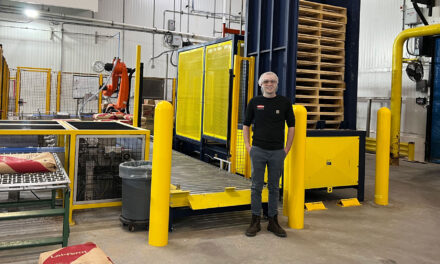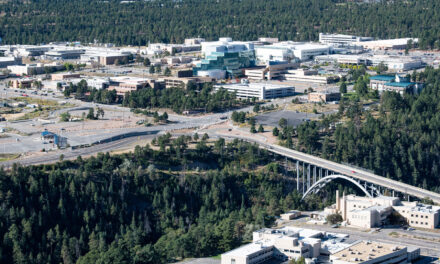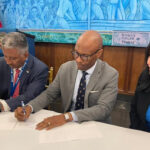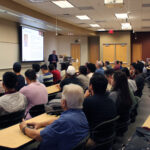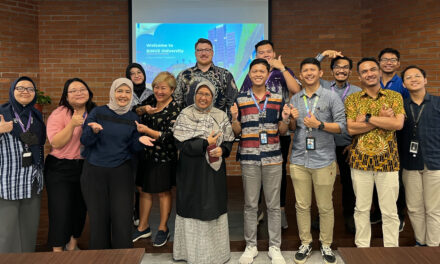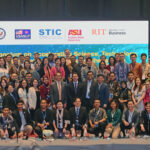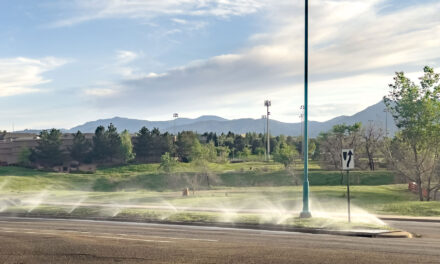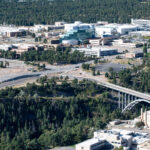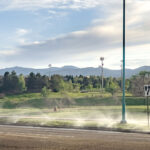
Sustainability project aims at boosting water, electrical systems resiliency

The interconnection of water and electrical power systems poses challenges for ensuring public infrastructure will be sustainable as the impacts of climate change become significant. Arizona State University researchers are working on ways to solve potential problems. Photograph from Wikimedia Commons.
Climate forecasts for coming decades predict conditions that could put a severe strain on critical infrastructure systems – particularly in the southwestern United States.
“The Southwest is going to be hotter and water flows will be different, with likely more intense weather events and more forest fires. All of this is going to have impacts on our water and electricity systems. At the same time demand for power and water will be increasing,” said Arizona State University engineer Mikhail Chester.
He and colleague Thomas Seager are leading a project to provide a guide – especially for urban areas – to begin boosting the resilience of infrastructure systems against potential threats posed by significant changes in climatic conditions.
Environmental vulnerability
Chester is an assistant professor and Seager is an associate professor in the School of Sustainable Engineering and the Built Environment, one of ASU’s Ira A. Fulton Schools of Engineering. They’ve been awarded a three-year $600,000 grant from the Water Sustainability and Climate program of the National Science Foundation and the National Institute of Food and Agriculture.
Their project team will include: Ben Ruddell, an assistant professor in The Polytechnic School of the Fulton Schools of Engineering; Susan Clark, an assistant research professor in the School of Sustainable Engineering and the Built Environment; and Clark Miller, an associate professor and associate director of the Consortium for Science, Policy & Outcomes at ASU.
The work based at ASU’s Sustainable Urban Systems Lab, which is directed by Chester, will focus primarily on desert regions, because they are especially vulnerable to environmental impacts brought on by climate factors.
Seeking proactive solutions
Desert regions typically have scarce water resources and rely heavily on thermoelectric power generation – which uses steam from boiled water to move turbines to generate electricity. Water supply systems also rely on electrical power for pumping and transport.
Such interconnectedness of water and power infrastructures means disruption of the operations of any one of them can intensify the overall detrimental impacts on the municipalities and regions served by the systems.
Consider also that much current infrastructure isn’t designed to withstand the kinds of stresses that likely will be put on them by future climate and environmental conditions, Chester said, and it adds up to a more challenging scenario.
“We want to get infrastructure managers, decision makers and policy makers to think about proactively designing solutions, to prepare to respond to disasters before they happen,” he said. “Today, that is done mostly retroactively.”
Encouraging foresight
“The biggest challenge to U.S. infrastructure from climate change stems from the fact that distinct systems, like water and energy, are tightly coupled together, but our methods for risk and vulnerability assessment generally model only a single system at a time,” Miller explains. “Recent disasters demonstrate that it is the linkages between systems that give rise to unexpected problems.”
In his role in the research project, Miller will examine how the institutions that govern water and energy resources contribute to vulnerability and resilience of the coupled water and energy systems.
Seager will work on developing one of the key methods the project team hopes will encourage foresight in policy making and planning for these infrastructure networks.
Using Arizona as a case study, Seager will devise a game-based learning platform – specifically a computer game – to educate leaders about possible future infrastructure vulnerability issues and how to approach the task of assessing what can be done to deal with them sooner rather than later.
Exploring preventive measures
The effort will be expanded to other ways of educating technical workers, the public and university students about these climate vulnerability challenges and possible solutions.
The game-based education tools also will be made available on a publicly accessible website, along with a series of documents on sustainable infrastructure transition – both designed to inform users and organizations concerned about municipal and agricultural water systems, electricity and power generation systems.
In addition, Chester and Seager plan to work with the Arizona Science Center to establish a forum program that brings together community leaders, engineers and technical workers to explore what preventive measures could be taken to better fortify urban infrastructure.
Potential global impact
The climate vulnerability project is related to goals of research Chester and Seager also are conducting as part of the Resilient Interdependent Infrastructure Process & Systems program, which is also supported by the National Science Foundation. Seager is the principal investigator for ASU’s role in this multi-university project.
“We view this research as an important first step for identifying how the next generation of climate-resilient infrastructure should be deployed and managed,” Chester said. “We anticipate that our findings will be useful for academics, other researchers and infrastructure managers not only in the United States but around the world.”
For more on research related to this project, see Future Extreme Heat Events in the U.S. Southwest.
Media Contact
Joe Kullman, [email protected]
480-965-8122
Ira A. Fulton Schools of Engineering










